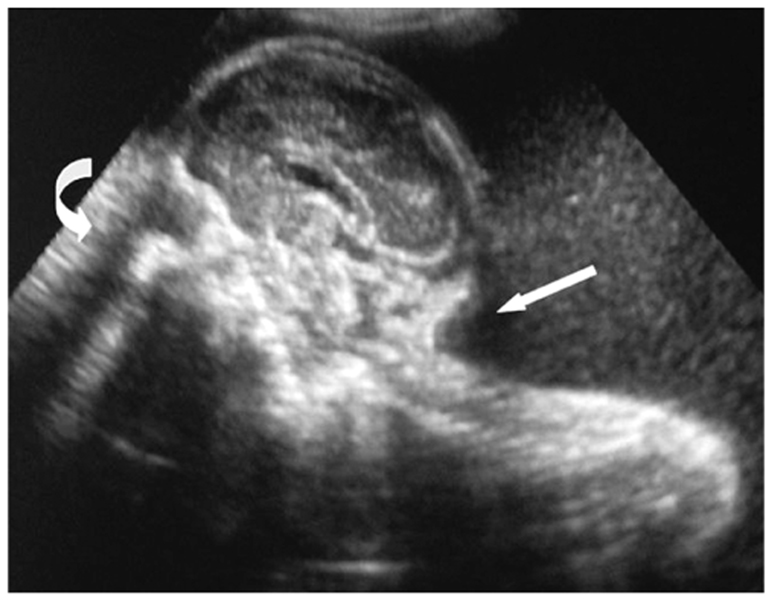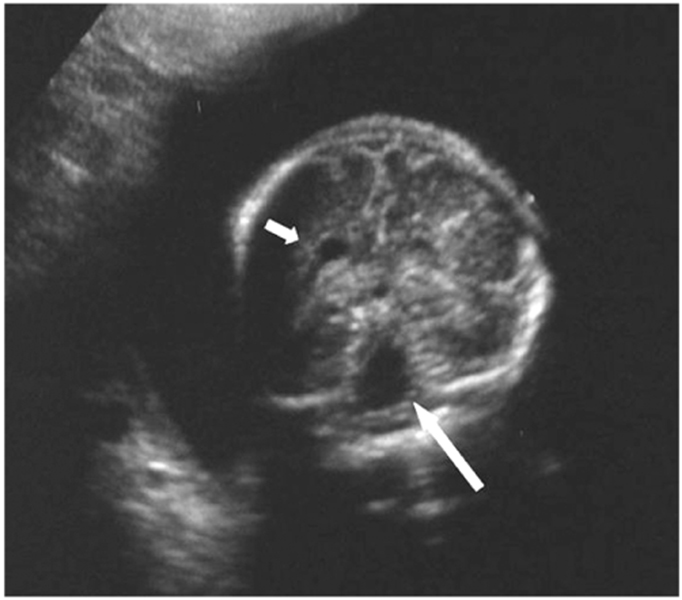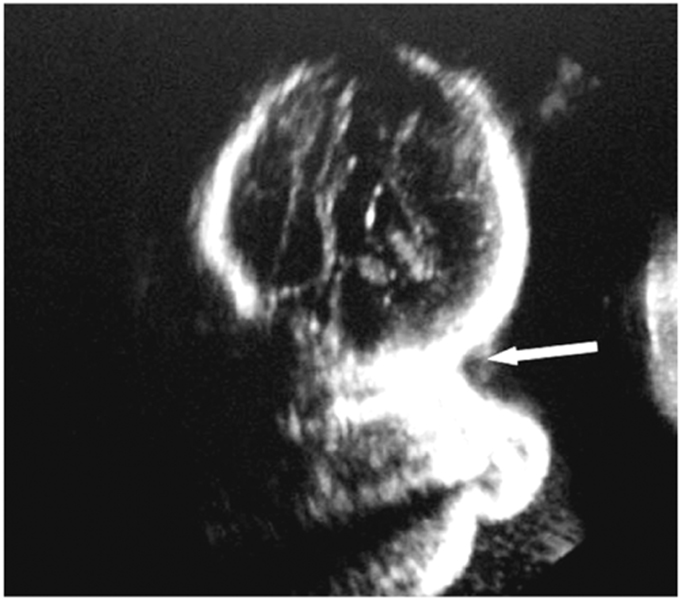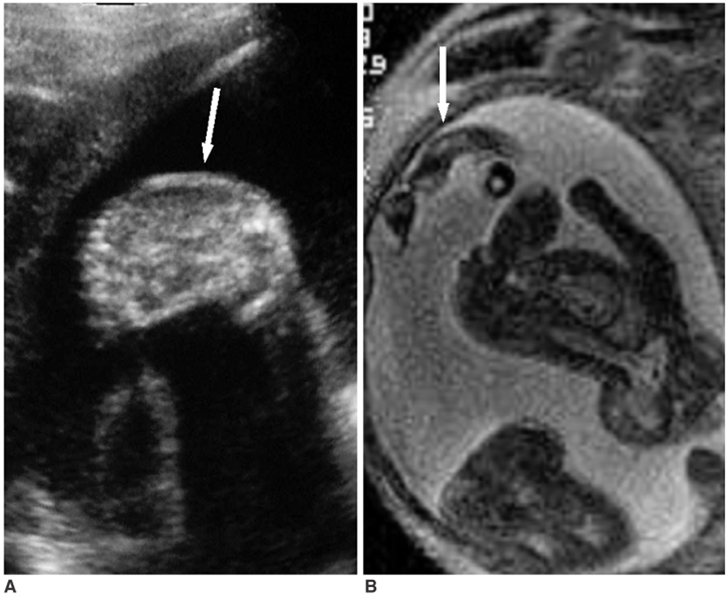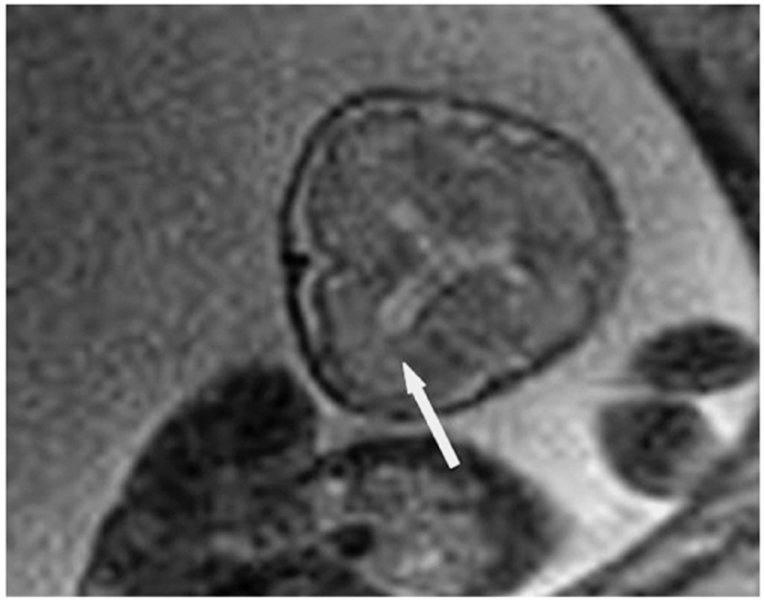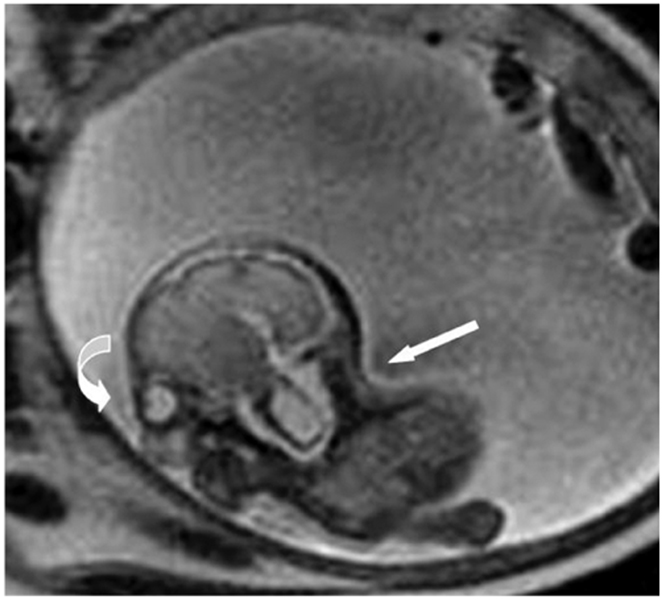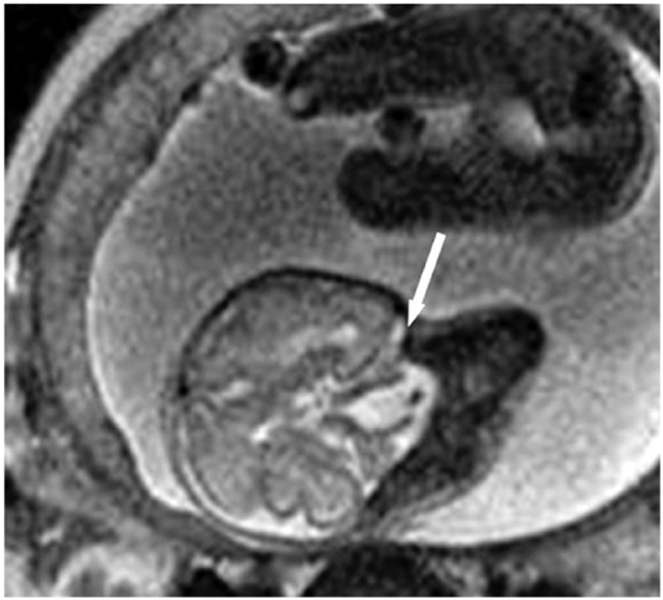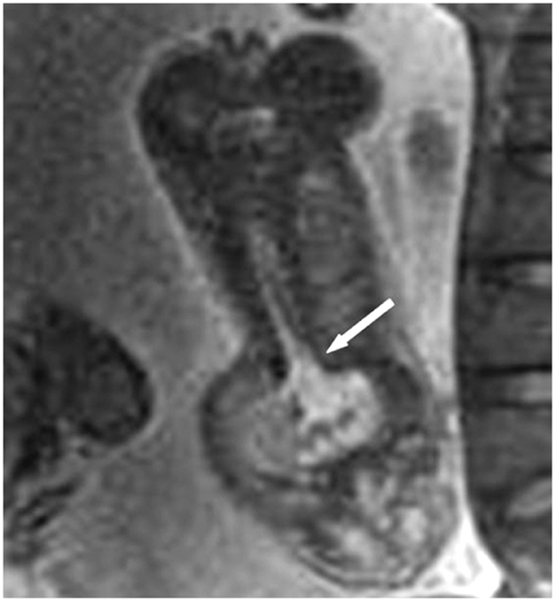Korean J Radiol.
2007 Aug;8(4):351-355. 10.3348/kjr.2007.8.4.351.
Antenatal Diagnosis of Iniencephaly: Sonographic and MR Correlation: A Case Report
- Affiliations
-
- 1Department of MRI, Mammography and BMD, Balabhai Nanavati Hospital & Research Centre, Mumbai, INDIA. drsonap@yahoo.co.in
- 2Department of Ultrasonography and CT Scanning, Balabhai Nanavati Hospital & Research Centre, Mumbai, INDIA.
- 3Department of Obstetrics & Gynecology, Balabhai Nanavati Hospital & Research Centre, Mumbai, INDIA.
- KMID: 1110734
- DOI: http://doi.org/10.3348/kjr.2007.8.4.351
Abstract
- Iniencephaly is an uncommon and fatal neural tube defect involving the occiput and inion, this occurs together with rachischisis of the cervical and thoracic spine, and retroflexion of the head. We report the ultrasound (US) and magnetic resonance (MR) imaging findings of a case of iniencephaly with clubfeet and arthrogryposis. The diagnosis of iniencephaly is easy to make on ultrasound due to the typical star-gazing fetus. However, the details of the fetal brain and spinal cord may not be adequately delineated on US. We found MR imaging to be superior for depicting central nervous system abnormalities. MR imaging has evolved as an imaging modality and it is complementary to fetal US, yet US remains the screening modality of choice.
Keyword
MeSH Terms
Figure
Reference
-
1. Lewis HL. Iniencephalus. Am J Obstet. 1897. 35:11–53.2. Saint-Hilaire IG. Iniencephalus. Histoire des Anomalies de l'Organisation. 1836. Vol. 2. Paris: Bailliere;308–310.3. Nyberg DA, McGahan JP, Pretorius DH, Pilu G. Diagnostic imaging of fetal anomalies. 2003. Philadelphia: Lippincott Williams & Wilkins;315–316.4. Jayant K, Mehta A, Sanghvi LD. A study of congenital malformations in Mumbai. J Obstet Gynaecol India. 1961. 11:280–294.5. Lemire RJ, Beckwith JB, Shepard TH. Iniencephaly and anencephaly with spinal retroflexion, a comparative study of eight human specimens. Teratology. 1972. 6:27–36.6. Bhandari B, Tak SK, Mehta R, Agrawal RK. Iniencephaly with several rare associated anomalies. Indian Pediatr. 1982. 19:722–724.7. Huppert BJ, Brandt KR, Ramin KD, King BF. Single-shot fast spin-echo MR imaging of the fetus: a pictorial essay. Radiographics. 1999. 19:s215–s227.
- Full Text Links
- Actions
-
Cited
- CITED
-
- Close
- Share
- Similar articles
-
- A Case of Iniencephaly Diagnosed by Prenatal Ultrasonography
- Ultrasonography of hydronephrosis in the newborn: a practical review
- Neonatal Hemimegalencephaly Accompanying Band Heterotopia: Sonographic Finding and Correlation with MR Finding
- A Case of Holoprosencephaly
- Antenatal Sonographic Diagnosis of the Amniotic Band Syndrome

